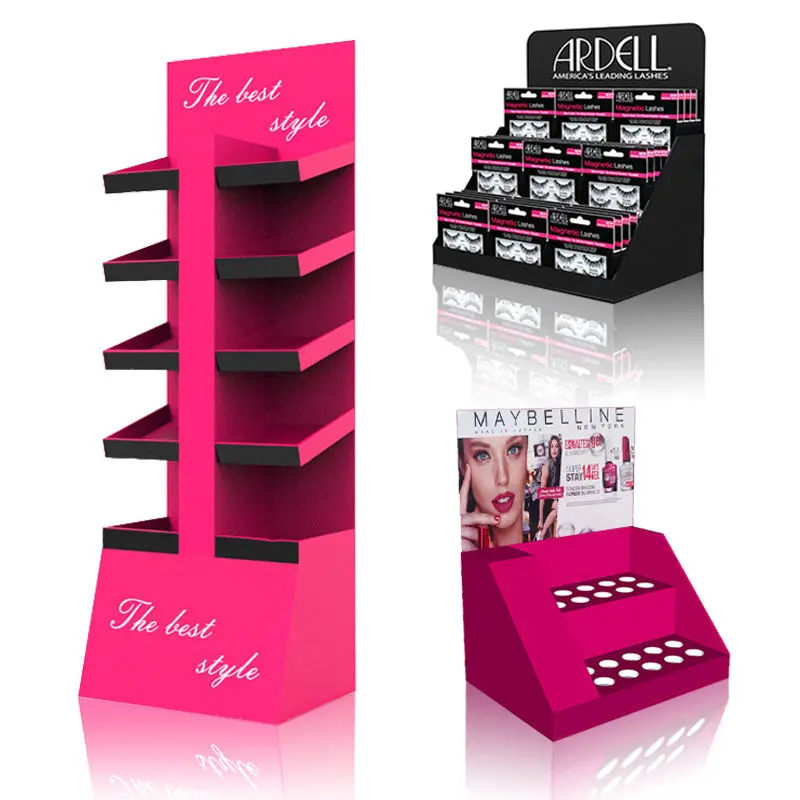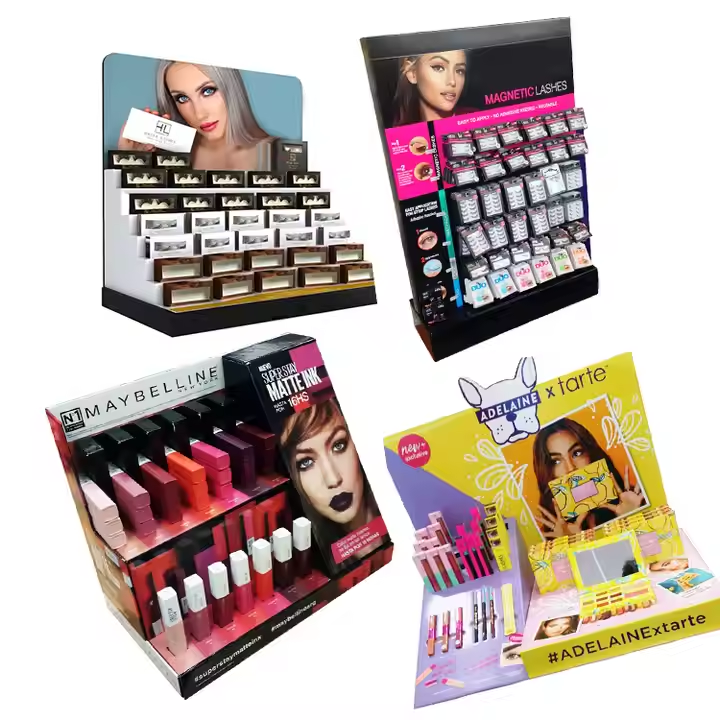Struggling with bulky, expensive displays? They drain your budget and don't align with green initiatives. Corrugated cardboard floor displays are the smart, sustainable, and cost-effective solution you need.
Corrugated cardboard floor displays are incredibly beneficial because they are lightweight, cost-effective, and fully customizable. They offer excellent structural strength, are made from recyclable materials, and can be printed with vibrant graphics to attract customers and powerfully boost sales in any retail environment.
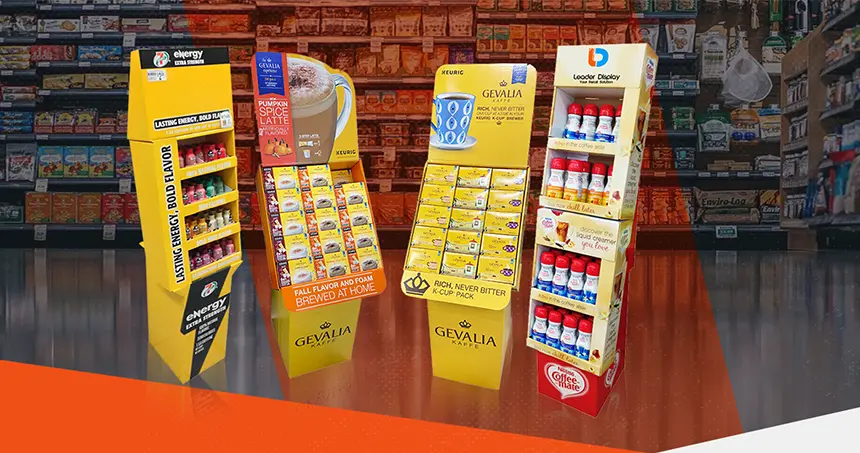
Those are the main benefits in a nutshell. But as a designer or brand manager, you probably want to know more about the "why" and "how". I've spent 16 years working with this material, and I've seen firsthand how it can transform a marketing campaign. Let's break down exactly what makes corrugated cardboard so special and why it's a top choice for brands worldwide. The details might surprise you.
What are the advantages of corrugated cardboard?
Are you looking for a material that's both strong and light? Standard materials often force you to choose one over the other. Corrugated cardboard gives you both, without any compromise.
The main advantages of corrugated cardboard are its high strength-to-weight ratio, cost-effective1ness, and sustainability2. It's surprisingly durable, easy to customize with printing and cutting, and is made from renewable resources. This makes it an excellent choice for modern packaging and display needs.
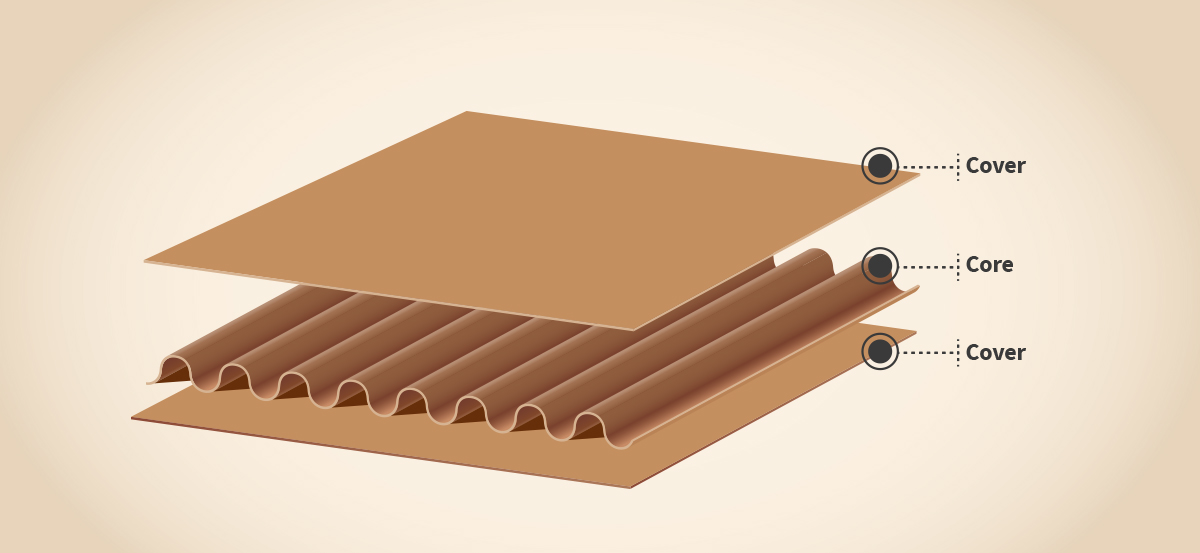
When I first started in this industry 16 years ago, I was amazed by this simple material. It looks like basic paper, but its clever design gives it incredible abilities. The real magic comes from its unique combination of benefits that are hard to find in any other single material.
Strength from Structure
The secret to its strength is the middle layer, the wavy part we call "fluting3." This fluting3 creates a series of connected arches. Just like arches in a bridge provide strength, these paper arches make the entire sheet rigid and durable. This allows it to hold a surprising amount of weight.
Lightweight Champion
Despite its strength, corrugated cardboard is mostly air, so it's very light. I remember a client who switched from wood displays to our corrugated designs. Their shipping costs4 dropped by over 60%. That’s a huge win for any business. Lighter displays are also easier for store staff to move and set up.
Eco-Friendly Hero
Today, customers care about the environment. Corrugated cardboard is typically made from a high percentage of recycled materials and is fully recyclable itself. Choosing a sustainable material like this shows your brand is responsible and modern.
What is the point of corrugated cardboard?
Do your products get damaged during shipping? This leads to costly returns and unhappy customers. The right packaging material is the key to protecting your goods from the warehouse to the shelf.
The main point of corrugated cardboard is to provide superior protection5 and cushioning for products during transit and display. Its layered structure, with the inner fluting3, absorbs shocks and impacts. It's an engineered solution designed to keep the contents safe and secure.
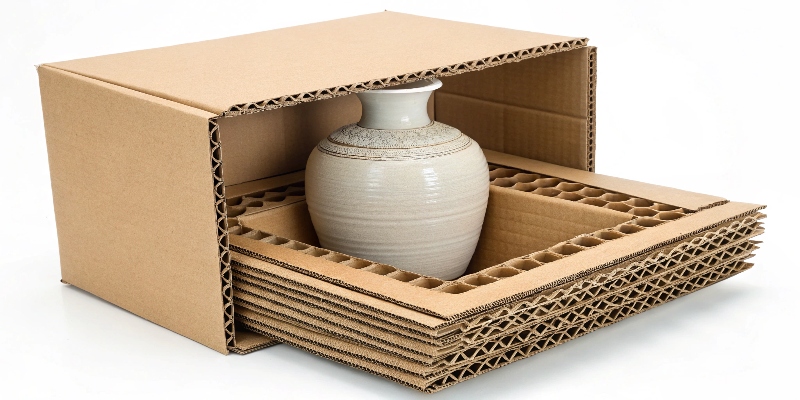
At its core, the entire point of corrugated cardboard is protection. It's a shield for your products. Whether it's a simple shipping box or a complex retail display, its primary job is to ensure the item inside arrives and stays in perfect condition. I always tell my clients, "Your product is the hero; the packaging is its bodyguard."
The Cushioning Effect
Think of it like the suspension in a car. The wavy middle layer, the "flute," acts like a series of springs. When a box is dropped or bumped, those paper arches compress and absorb the force. This action protects the fragile contents inside from the shock. It's simple physics, but it's incredibly effective and is the main reason why it’s the go-to material for shipping worldwide.
Versatility in Protection
Not all products need the same level of protection. That's why we use different types and thicknesses of fluting3. We can tailor the material to your exact needs.
| Flute Type | Characteristic | Best Use Case |
|---|---|---|
| B Flute | Good cushioning, firm | Retail packaging, displays |
| C Flute | Common, all-purpose | Standard shipping boxes |
| E Flute | Thin, great for printing | Small product boxes, food packaging |
| BC Flute | Double wall, very strong | Heavy-duty shipping, floor displays |
What are the benefits of corrugation6?
Is a simple flat sheet of paperboard not strong enough for your displays? It can bend and collapse easily. Corrugation is the engineering magic that transforms weak paper into a robust structure.
Corrugation—the process of creating the wavy flute between paper liners—provides rigidity, durability, and insulation. This structure adds immense strength without adding much weight. It allows the cardboard to support products effectively and resist bending or crushing while remaining cost-effective1.
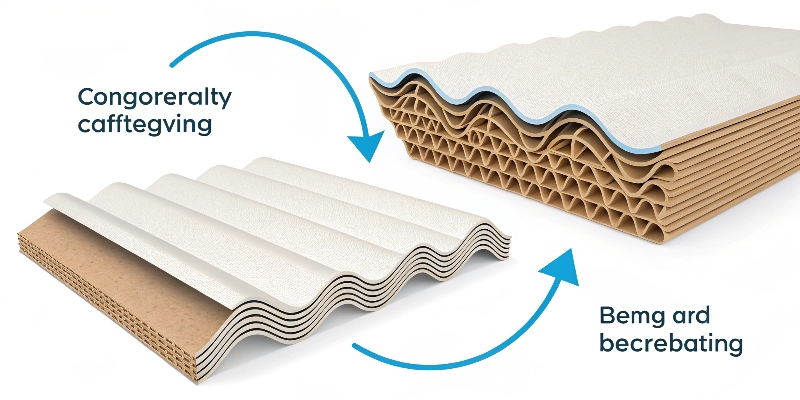
The act of "corrugating" a flat sheet of paper is what gives the final material all of its power. You start with three simple, flat sheets of paper. By themselves, they are weak. But when we glue them together with one sheet folded into that signature wave pattern, it becomes something else entirely.
Creating Vertical Strength
The "corrugation6" is that wavy layer. When you stand a piece of corrugated board on its edge so the flutes are vertical, those waves act like tiny columns. They hold up the flat liner sheets and give the board incredible stacking strength. This is crucial for floor displays. I've designed and built displays that can hold over 100 pounds of drinks or heavy goods, all thanks to this simple engineering trick. The structure does all the heavy lifting.
A Perfect Printing Surface
You get the best of both worlds with corrugation6. The inner structure provides all the strength and rigidity you need. At the same time, the outer liner sheets are smooth and flat. This makes them a perfect canvas for high-quality, vibrant printing that makes your brand pop in a busy store.
What are the advantages of using cardboard as a modelling material7?
Are you struggling to create quick and affordable prototypes8 for your display ideas? Using final materials is expensive and slow. You need a material that lets you freely experiment and innovate.
As a modelling material7, cardboard is fantastic because it's cheap, easy to work with, and lightweight9. It allows designers to quickly build prototypes8, test structural ideas, and visualize concepts. You can do this without committing to expensive materials or manufacturing processes.
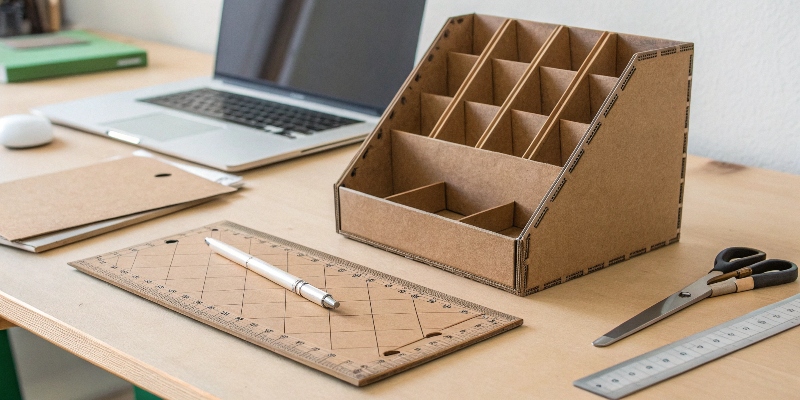
For designers like Peter, cardboard is an essential tool. Before we commit to a large production run for a client, we always build a model. Corrugated cardboard is my go-to material for this critical step in the design process.
Rapid Prototyping Made Easy
I can take a sheet of cardboard, cut it with a simple knife, and glue it together. In a few hours, I can have a physical 3D model in my hands. This speed is amazing. It allows my team and my client to see and feel exactly how the final display will work. It makes the idea real and helps everyone get on the same page quickly. There's no expensive tooling or long waits involved.
Testing Form and Function
A digital computer model is great, but a physical one tells you so much more. With a cardboard prototype, we can test everything. Does the product fit on the shelf correctly? Is the structure stable when you put weight on it? Is the overall size right for a retail aisle? It helps us catch design flaws early. I remember one project where the prototype revealed the shelves were too deep for shoppers to easily reach back products. We fixed it in an hour. That simple change saved the client thousands of dollars because we found it before production.
Conclusion
In short, corrugated cardboard displays are a smart choice. They are cost-effective1, strong, sustainable, and highly customizable. They offer unmatched value for boosting your brand's presence in any retail setting.
-
Explore ways to save money while maximizing marketing impact with affordable display options. ↩ ↩ ↩
-
Explore how sustainable practices can enhance your brand's reputation and appeal. ↩
-
Discover how the unique structure of fluting enhances strength and durability. ↩ ↩ ↩ ↩
-
Find strategies to lower expenses and improve logistics through smart packaging. ↩
-
Understand how this material safeguards your products during transit and display. ↩
-
Explore the process that transforms paper into a strong, versatile material. ↩ ↩ ↩
-
Discover the benefits of using cardboard for quick and cost-effective design iterations. ↩ ↩
-
Learn about the advantages of using cardboard for rapid prototyping in design. ↩ ↩
-
Learn about the advantages of lightweight materials in reducing shipping costs and improving handling. ↩




